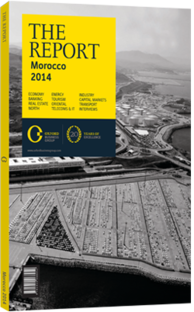Fruit of the oasis: A scheme to boost date production will also support regional development
While Morocco is a major agricultural exporter to Europe, as evidenced by a glance at the produce aisle of any large supermarket, one popular type of fruit is rarely exported outside the country: dates. Historically, the country has consumed more dates than it has produced, but activity in the segment is expected to be revived under a new development programme launched by the National Agency for the Development of Oases and Argan (Le Conseil d’Orientation Stratégique de l’ Agence Nationale pour le Développement des Zones Oasiennes et de l’Arganier, ANDZOA) in early October 2013. The strategy, which aims to enhance date and argan oil production, is in line with the government’s broader goals of boosting agriculture exports and income in rural areas, as set out in the Green Morocco Plan (Plan Maroc Vert, PMV), initiated in 2008. According to ANDZOA, up to Dh92bn (€8.2bn) is set to be invested through 2020 under the new scheme.
MORE PALM TREES: Morocco produces around 90,000 tonnes of dates a year, compared to domestic consumption of about 120,000 tonnes, according to the Agency of Partnership for Progress, a government organisation. Imports meet this gap, with supply coming from countries such as Algeria and Tunisia, where output reached 850,000 tonnes and 192,000 tonnes in 2012, respectively. The government would like to see a reduction in imports and boost exports, which today are nominal. Authorities have targeted annual production of 160,000 tonnes by 2020, with a minimum of 5000 tonnes for overseas sales.
Higher production levels are to be achieved in part through the planting of more palm trees. Since the early 20th century, around 12m trees in Morocco have been lost to the bayoud disease, a fungus that has affected plantations across North Africa. Around 5m trees remain today, a figure that the government would like to see increased to 8m by 2020. Progress has already been made – since the launch of PMV in 2008, around 1m new trees have been planted. Steps are also being taken to develop more disease-resistant varieties.
To complement the drive to plant trees, agreements were concluded in November 2013 at the International Fair for Moroccan Dates, held for the fourth time since 2011, gathering 186 participants from 12 countries. Among the aims of the event is boosting investment in oases, promoting socio-economic development in rural areas and addressing the challenges that have hampered sector development, such as insufficient access to electricity and project financing. Crédit Agricole Maroc announced two new products at the conference, Intaj Toumour and Tatmine Toumour, which will provide credit for date farming and processing projects in the regions of Draa, Tafilalet and Marrakech. The Ministry of Agriculture and Fisheries signed two agreements at the event, including one that would bring two new high-voltage power lines to date farms in Errachidia at a cost of Dh100m (€8.9m). A second agreement is related to the distribution and marketing of dates, with a goal of increasing sales to grocery stores.
PROMOTING AGRICULTURAL PRODUCTS: Bringing Moroccan dates to larger retail outlets would be an important change. The local crop is mainly sold through small informal shops, with dates from Tunisia accounting for most of the supply to supermarket chains. This is in part due to the fact the domestic dates are typically available only during the harvest season and often not packaged for sale in formal retail outlets.
Policymakers are also taking steps to boost local demand for Moroccan produce. To improve awareness of product origin and quality, a new labelling system was introduced in 2008. To date, a total of 21 products have been awarded the “protected origin designation” label, including Majhoul dates.
A recent campaign called “Terroir Maroc” was launched by the National Agency for Agricultural Development to make customers aware of these labelled products and encourage the consumption of local goods. Further labelling and marketing of other varieties could boost demand from local consumers, as well as perhaps pave the way for an increase in exports.
You have reached the limit of premium articles you can view for free.
Choose from the options below to purchase print or digital editions of our Reports. You can also purchase a website subscription giving you unlimited access to all of our Reports online for 12 months.
If you have already purchased this Report or have a website subscription, please login to continue.

